East to West Egypt
1/21
There's no tags or description
Looks like no tags are added yet.
Name | Mastery | Learn | Test | Matching | Spaced |
|---|
No study sessions yet.
22 Terms
pyramids of Cheops, Chephren, and Mykerinos, Giza, ca. 2500 BCE
picture
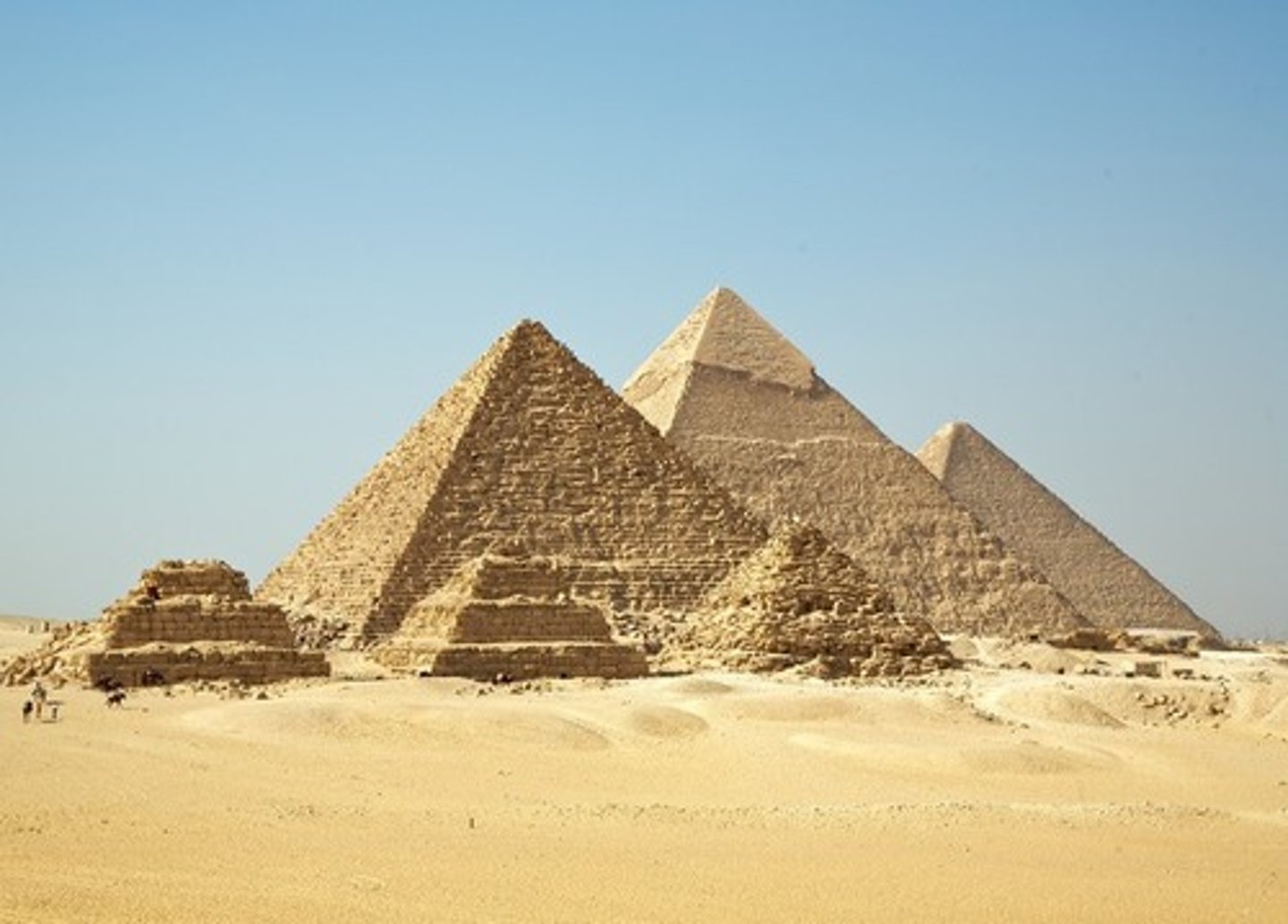
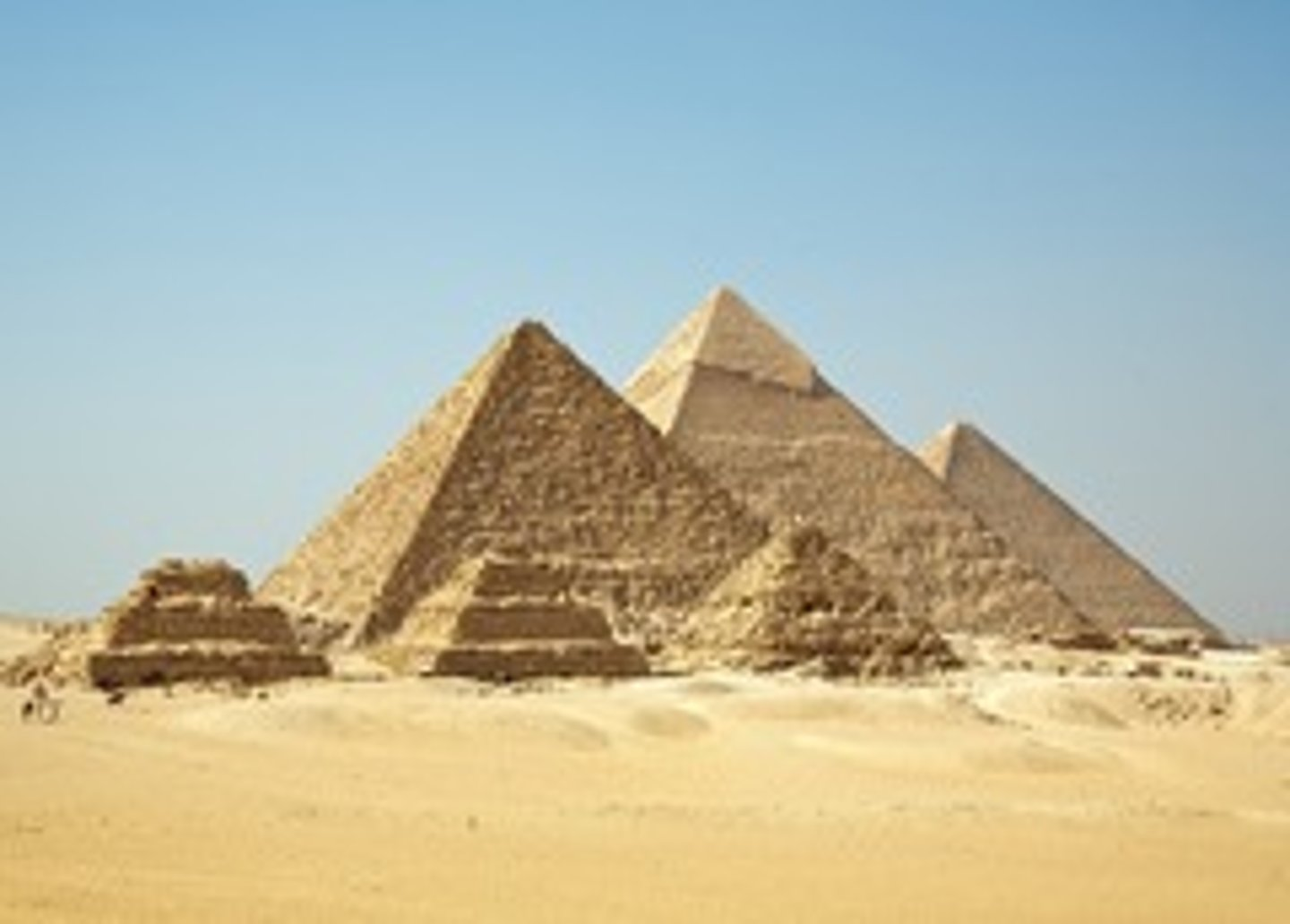
what are the Pyramids made of and what does it show
coated with limestone making it appear shiny
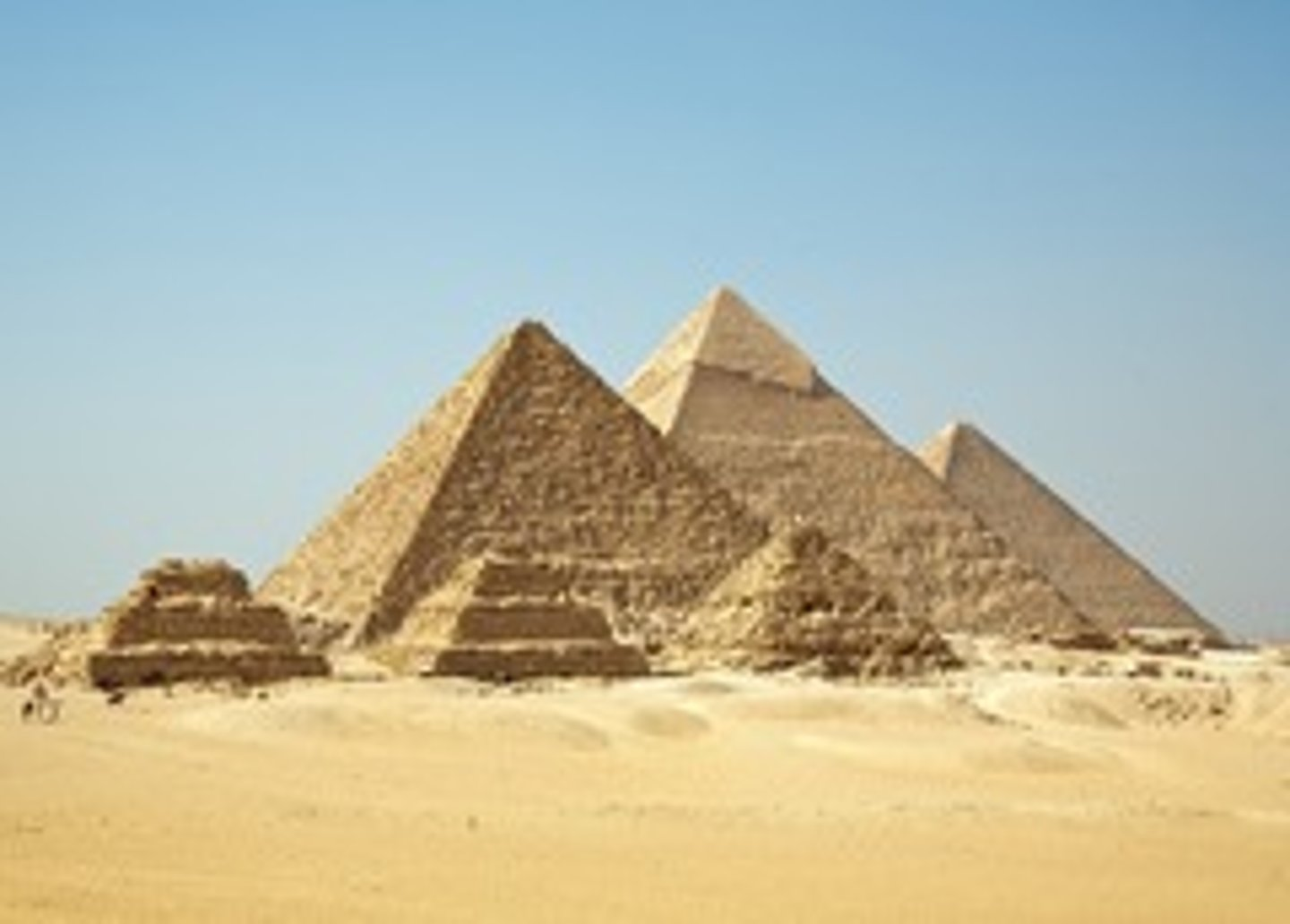
describe the shape/structure of the pyramids and its significance
Square base pointing to cardinal points, perfect geometric form, peak stretching up to the heavens for the worship of the sun, level base, passages in interior and chambers
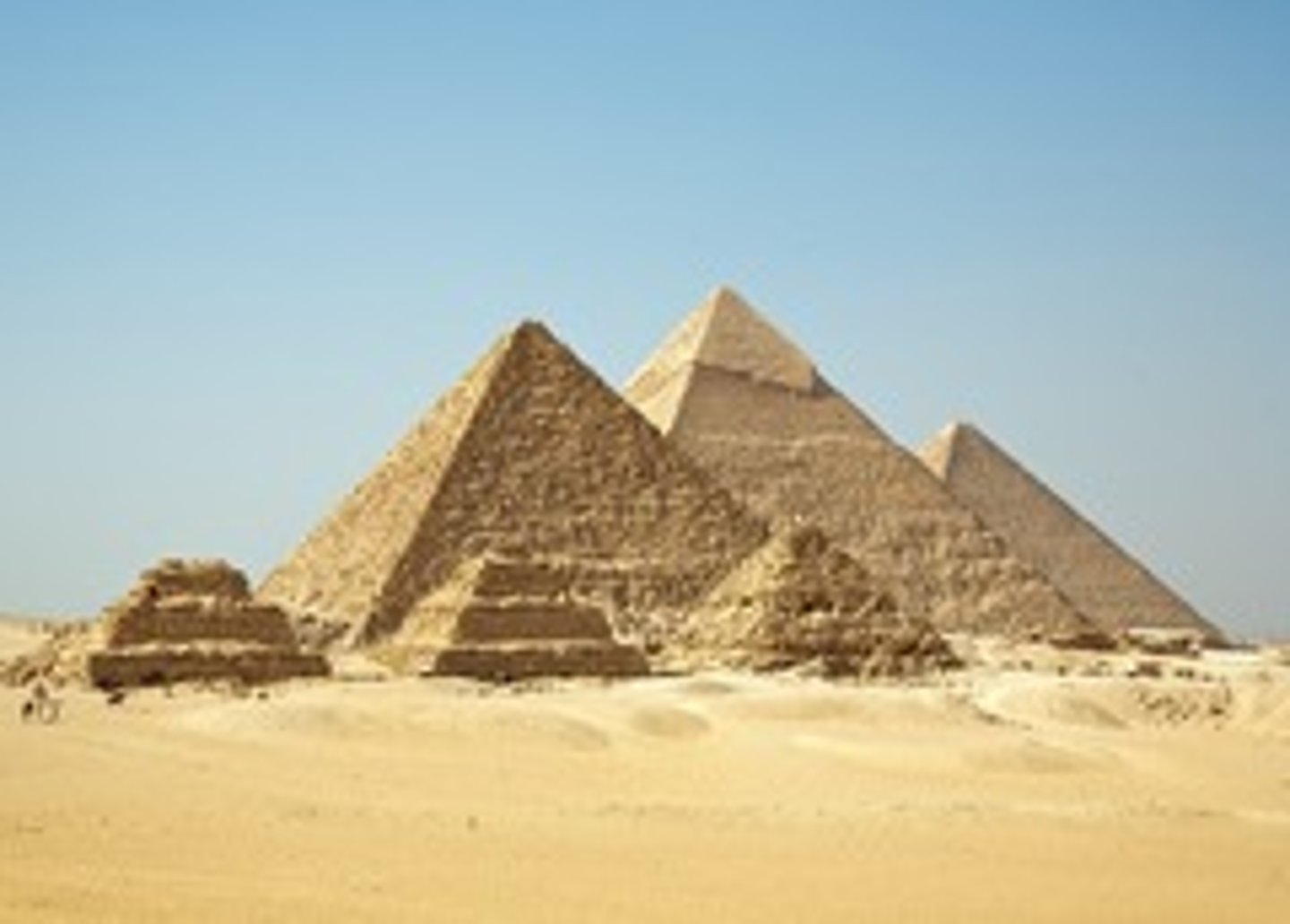
describe the surroundings of the pyramid and its significance
isolated away from the city, sphynx guarding it, smaller pyramids nearby, each has a causeway (hub of activity) and temple for priests and offerings to ensure the safety of them
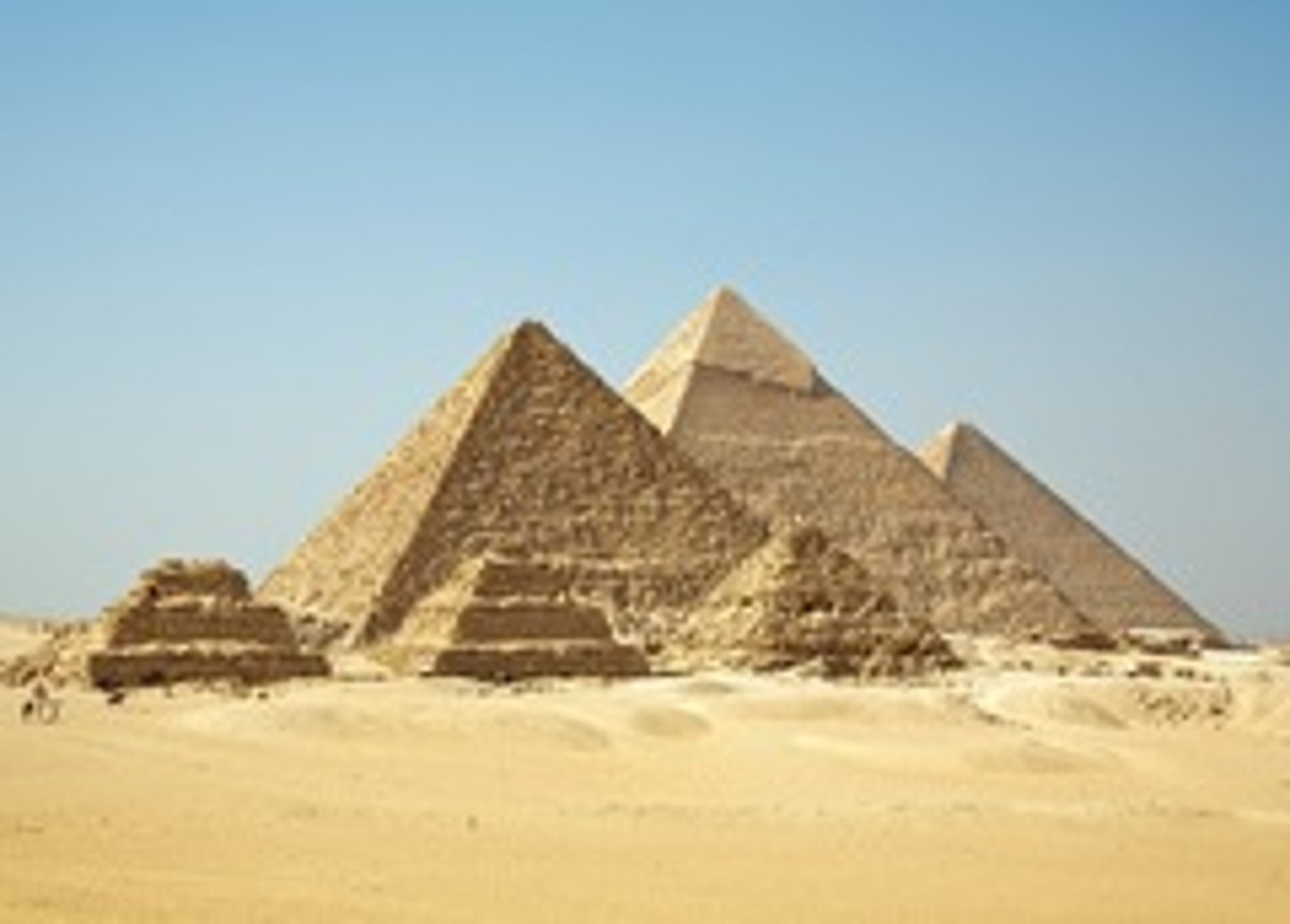
describe the inside of the pyramids and its significance
texts painted on the walls that talk about the symbol of the sun and the pharaoh joining in the heavens, acts as a ramp for the pharaohs to ascend
Seated Chephren, ca. 2500 BCE (Museum of Egyptian Antiquities, Cairo)
picture
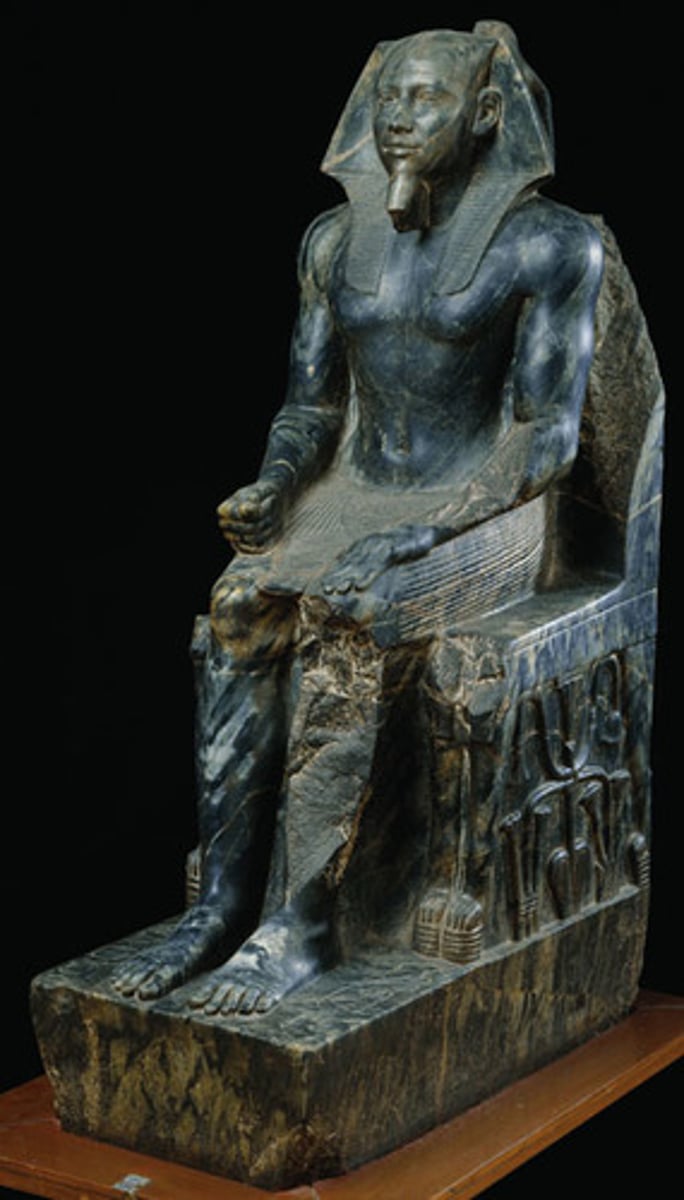
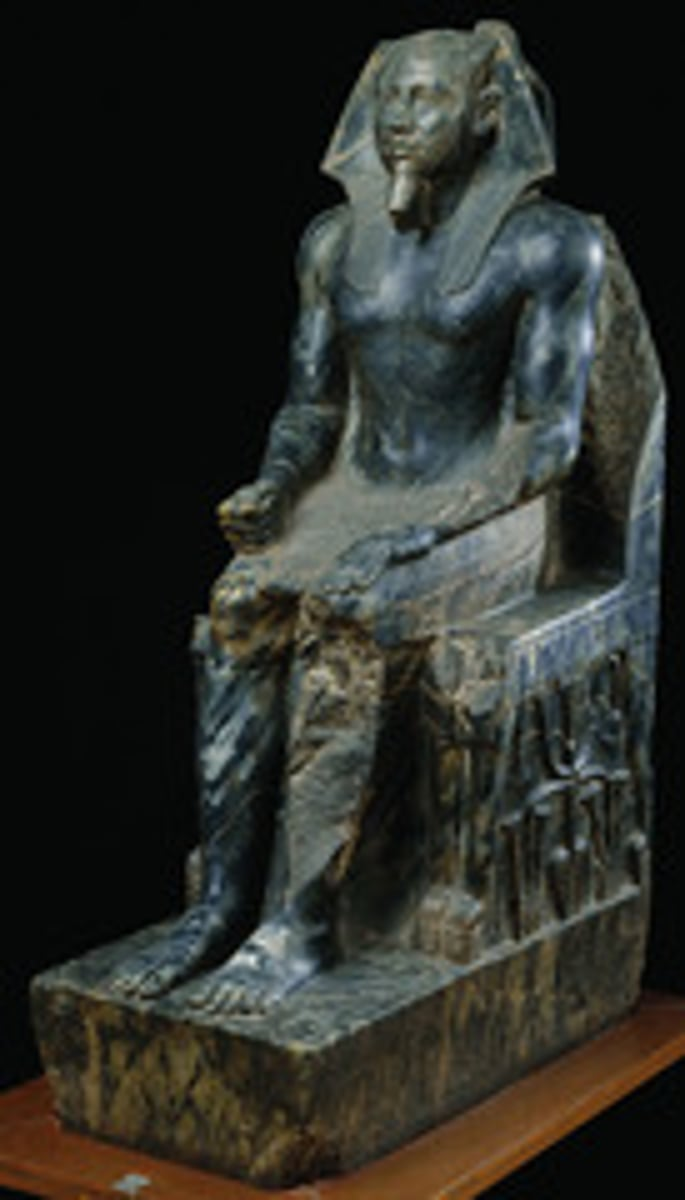
what are the Chephren made of and where were they found
fine, dark, hard stone, in a temple by the pyramids
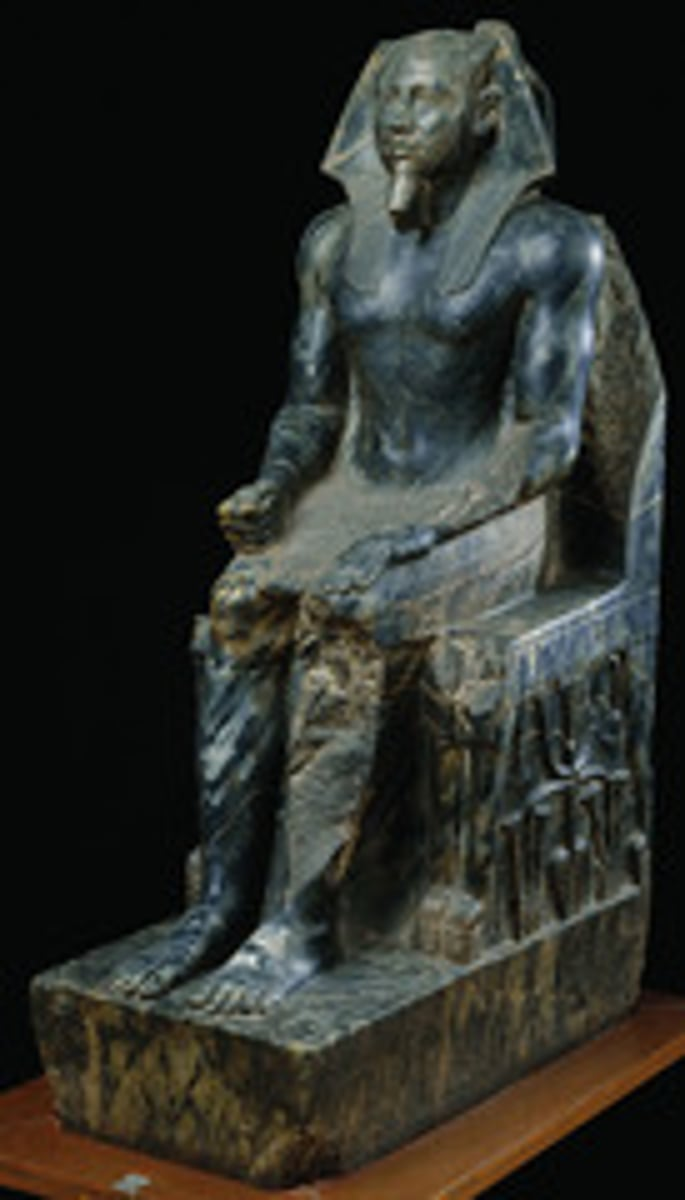
describe the composition of the Chephran and its significance
cubic/four-square form, symmetrical body shows an idealized type/model of perfection, Seated rigidly, compact and solid, attached to the throne
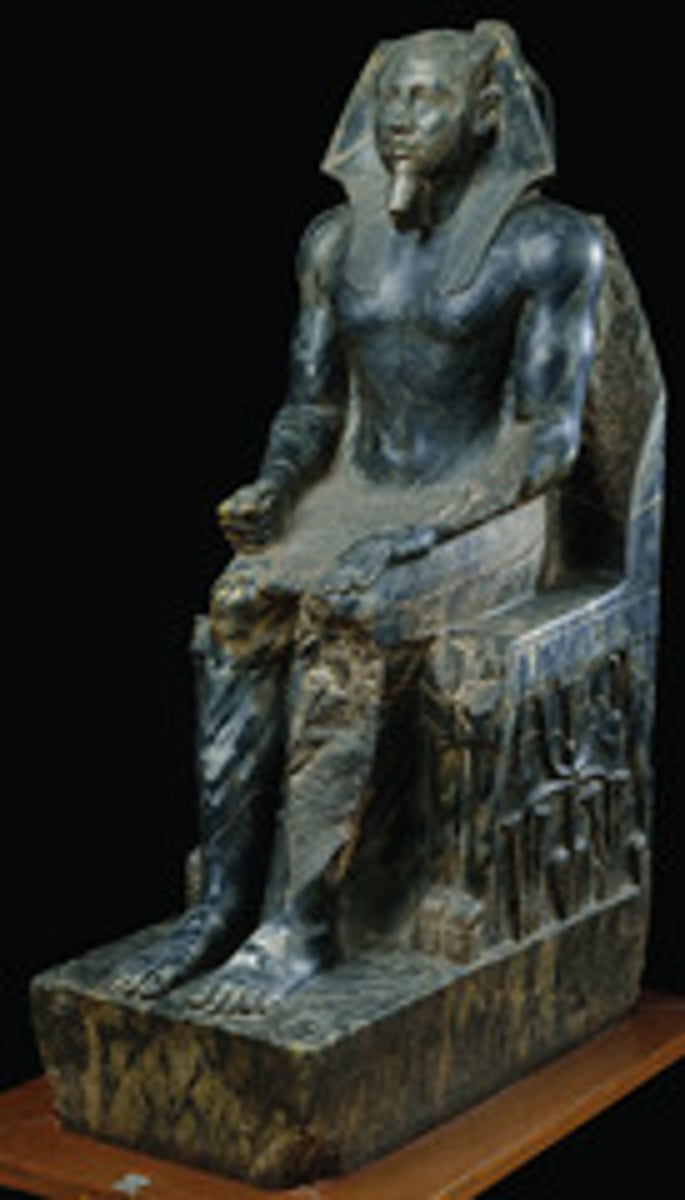
describe the appearance of the Chephran
chest out, frontal arms to the side, hands clenched and legs put together, youthful, broad shoulders, slender waist, modeling of chest (robust and athletic) shows the "ideal" form, no facial expression/impassive
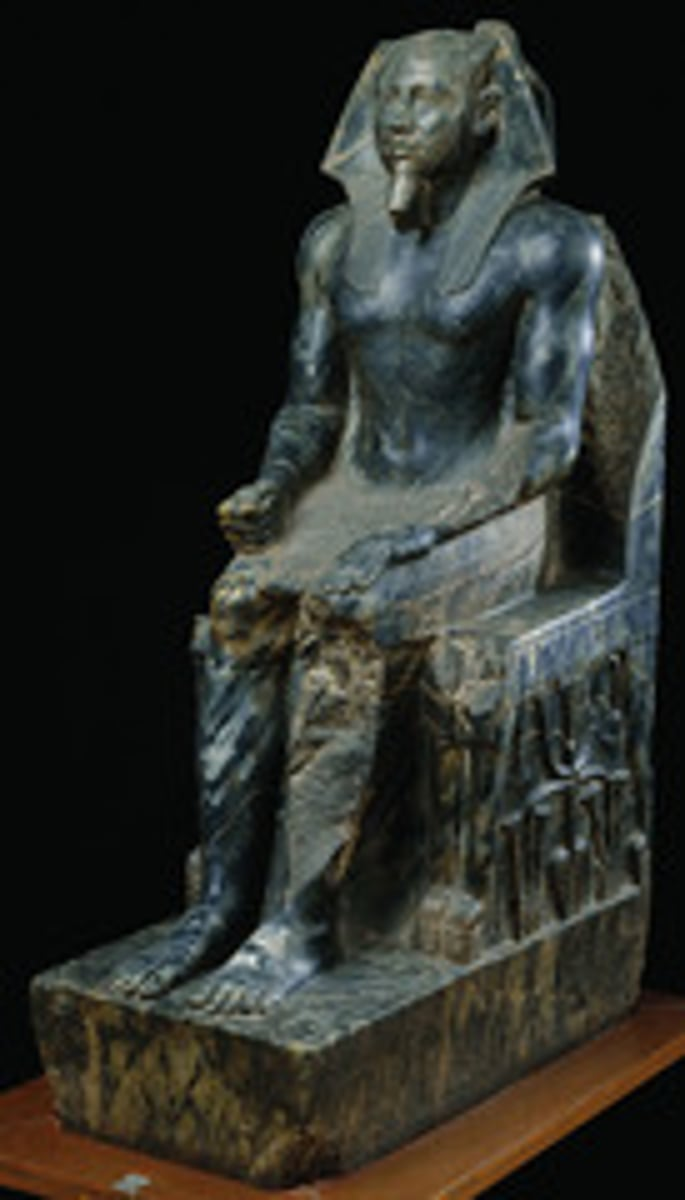
explain the adornment of the Chephran and its significance
the falcon seated on the shoulders "embracing" the pharaohs head shows the divinity on the pharaohs shoulders
Funerary Temple of Hatshepsut, Deir el-Bahari, ca. 1460 BCE
picture
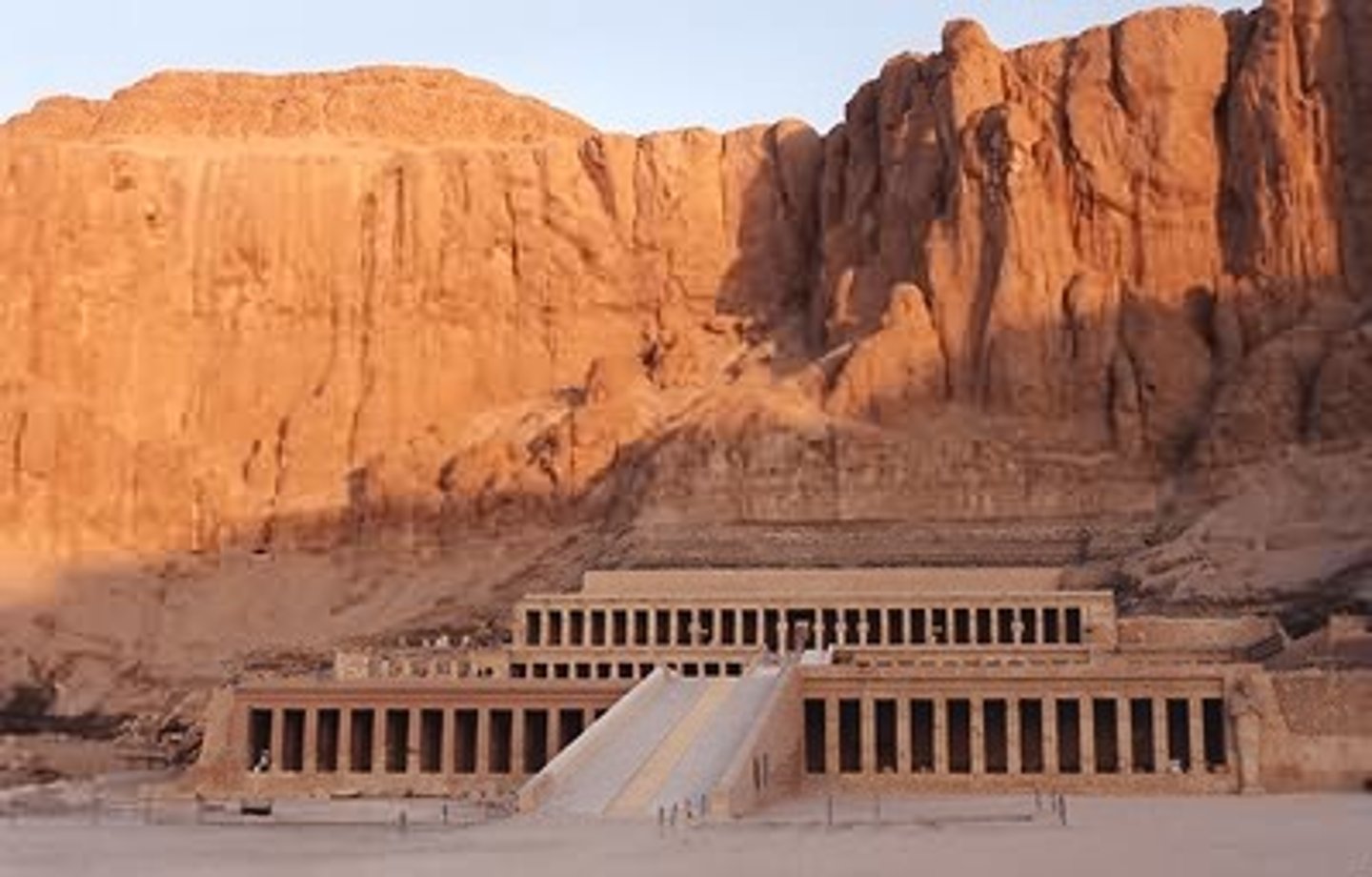
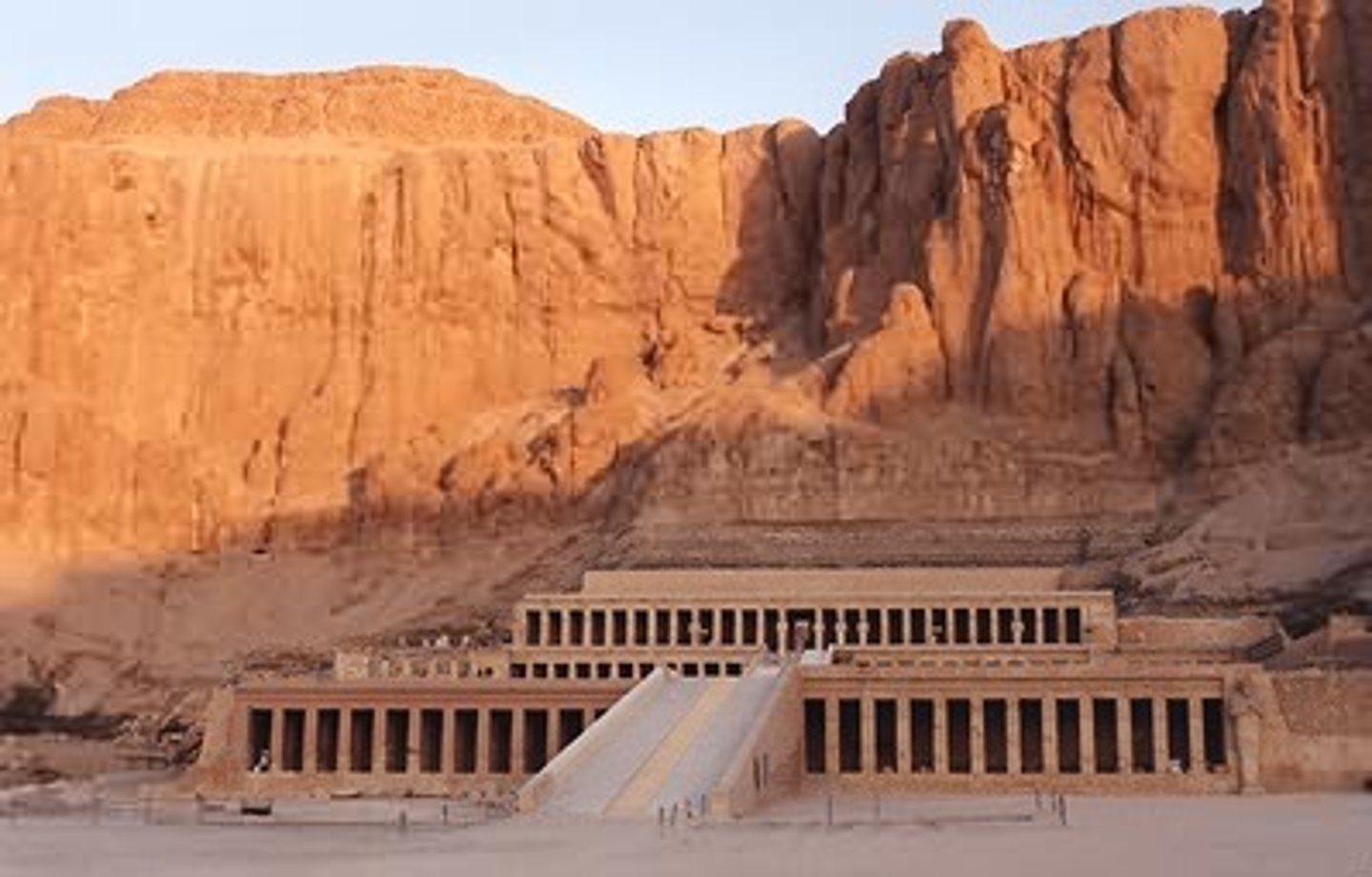
explain the circumstances surrounding the temple of Hatshepsut
She was the daughter of the Pharaoh and when her father died she took over as regent for her step-son before declaring herself pharaoh
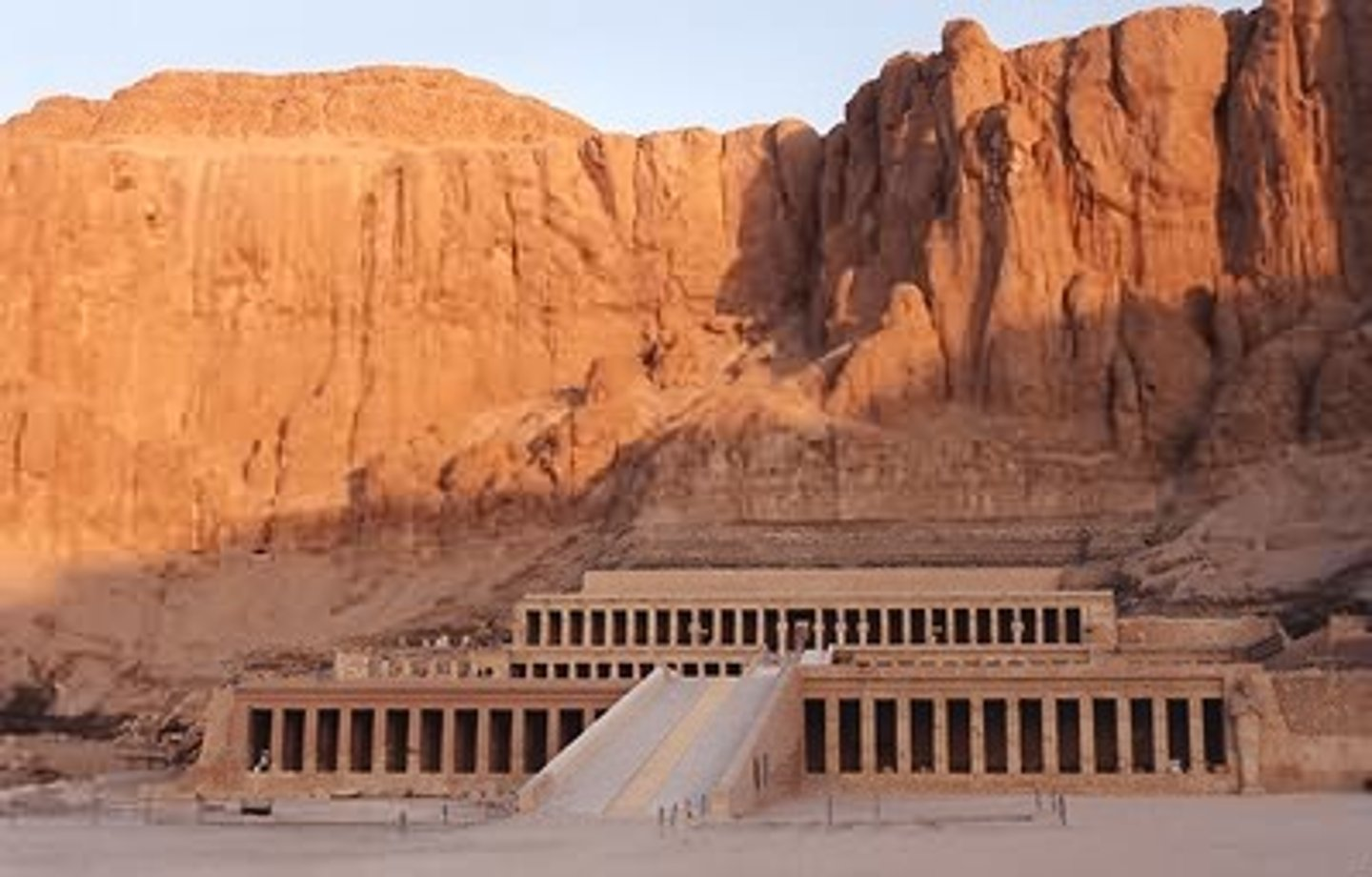
describe the surroundings of the temple of Hatshepsut and its significance
tombs in the nile cliffs making it harder to find, placed next to a temple of an earlier pharaoh, side chapel with other gods of death
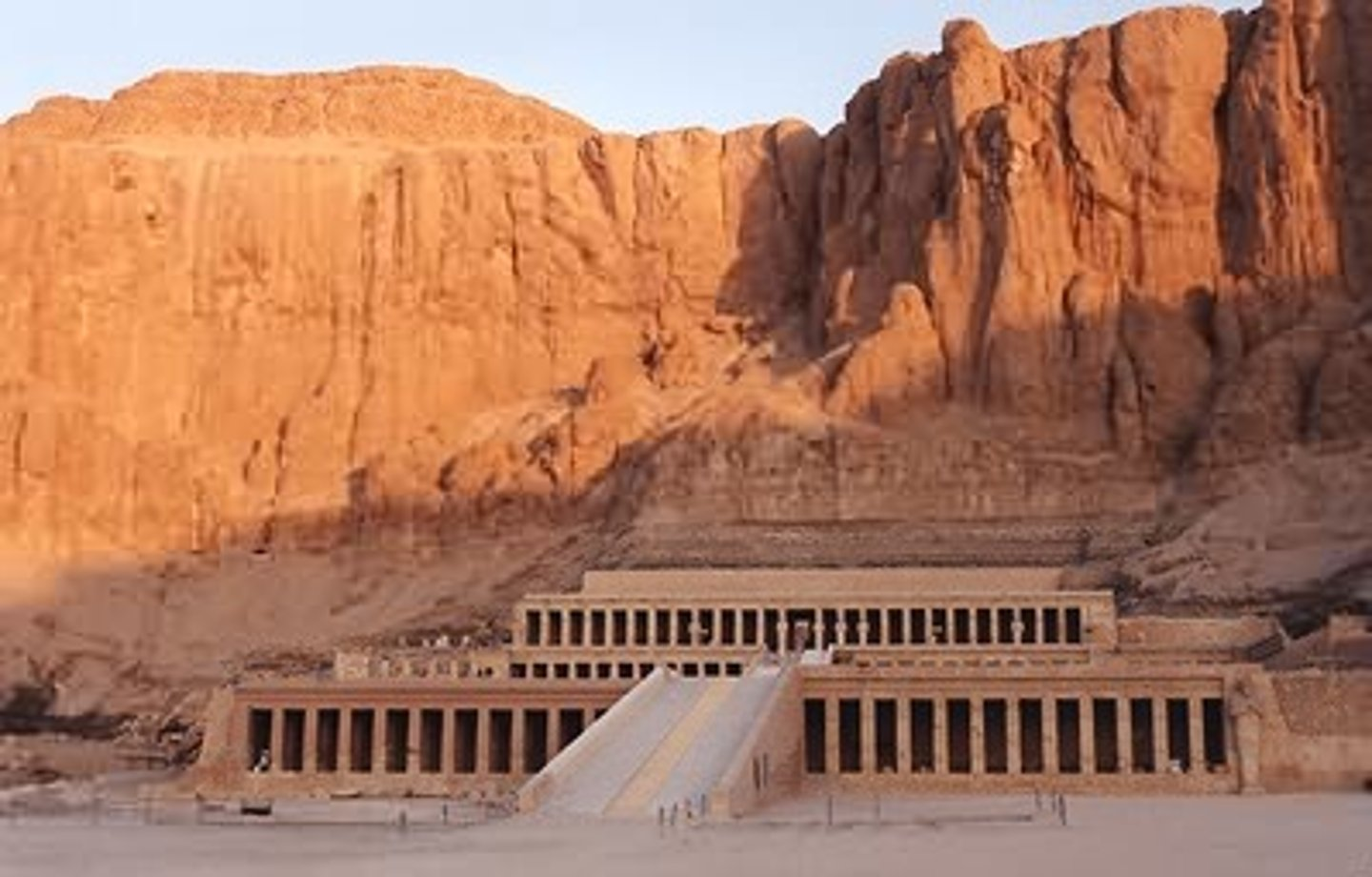
what is the temple of Hatshepsut made of and its significance
made out of the natural limestone cliffs, cut horizontally into the base, making use of the natural environment
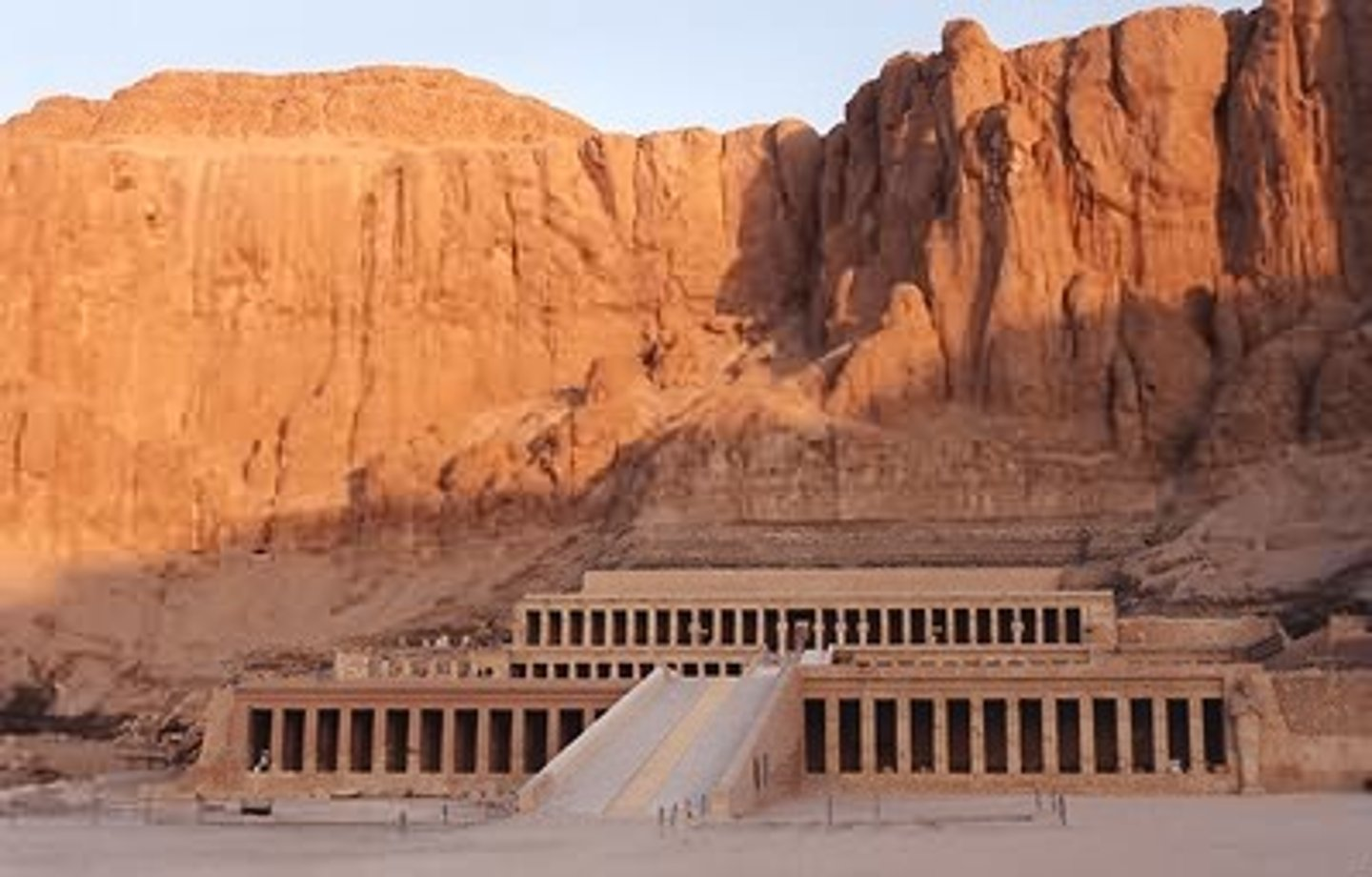
explain the composition and purpose of the Temple of Hatshepsut and its significance
it is open and airy, meant to be visited on feast days and holidays, horizontal terraces with ramps (approach on axis), courtyard, green with water, pools, and plants showing an earthly paradise
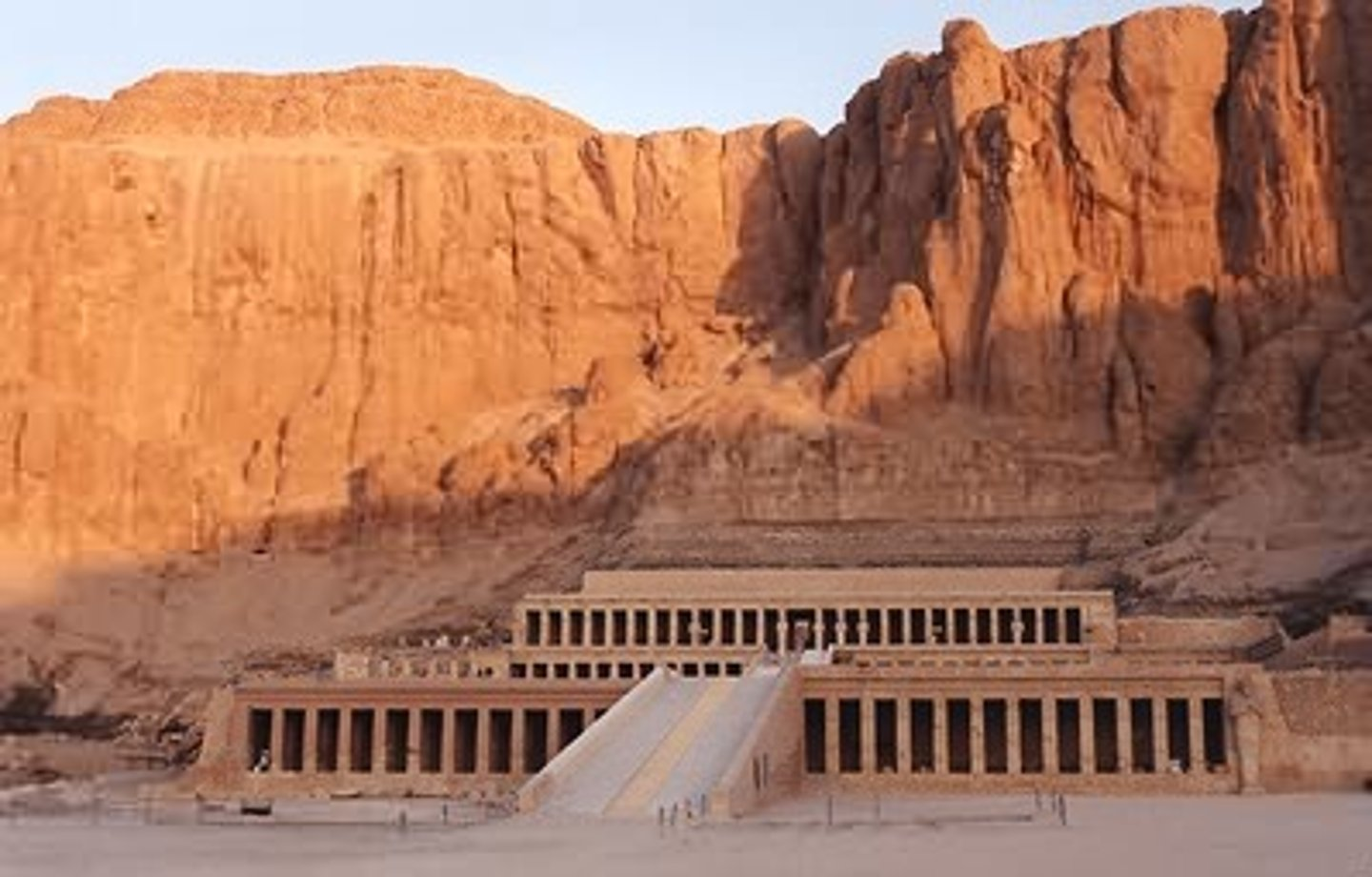
explain the adornments in the Temple of Hatshepsut
Sculptures of the god of the underworld Osiris, female figure on sculpture with headdress
Temples at Abu Simbel, Nubia, ca. 1250 BCE
picture
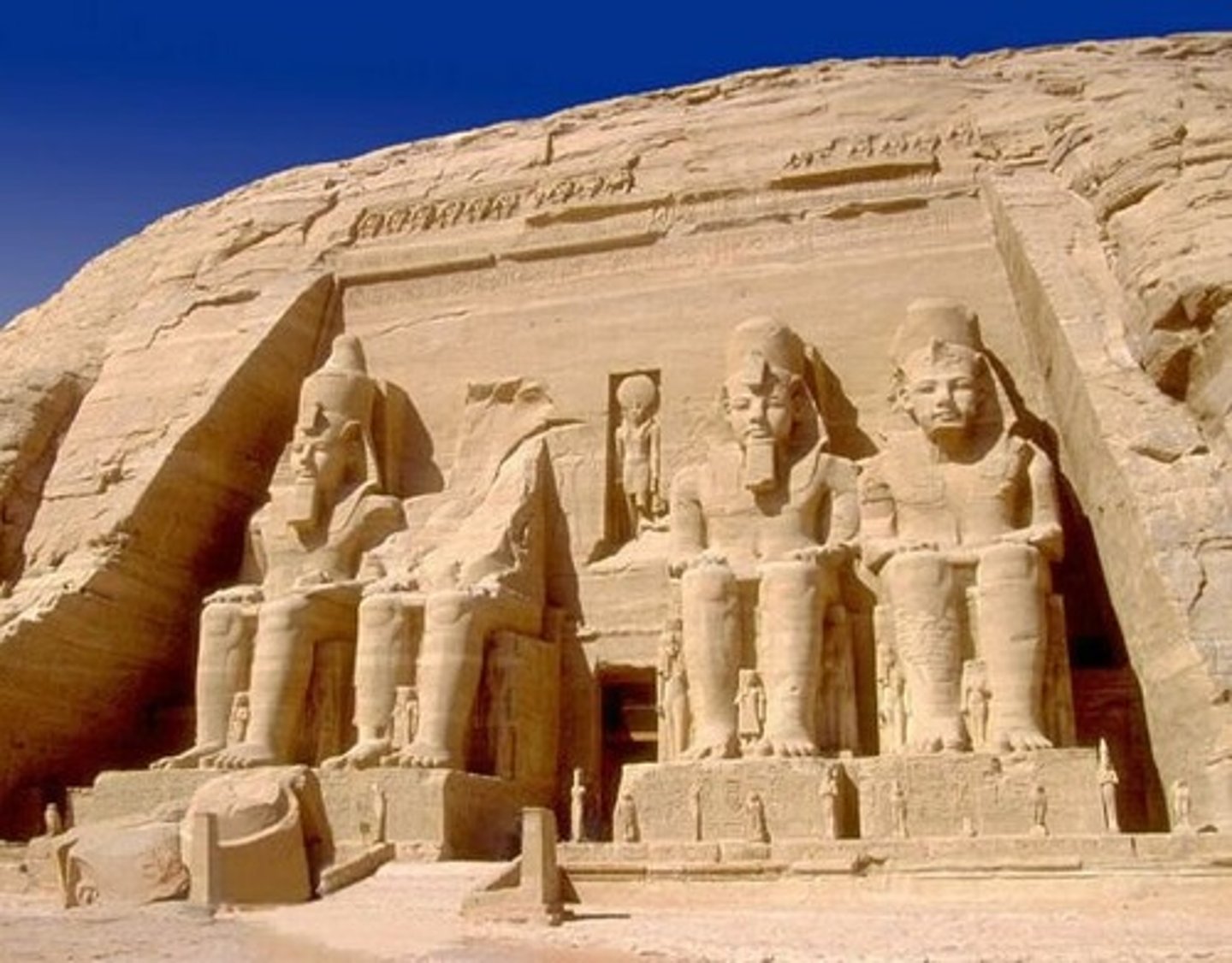
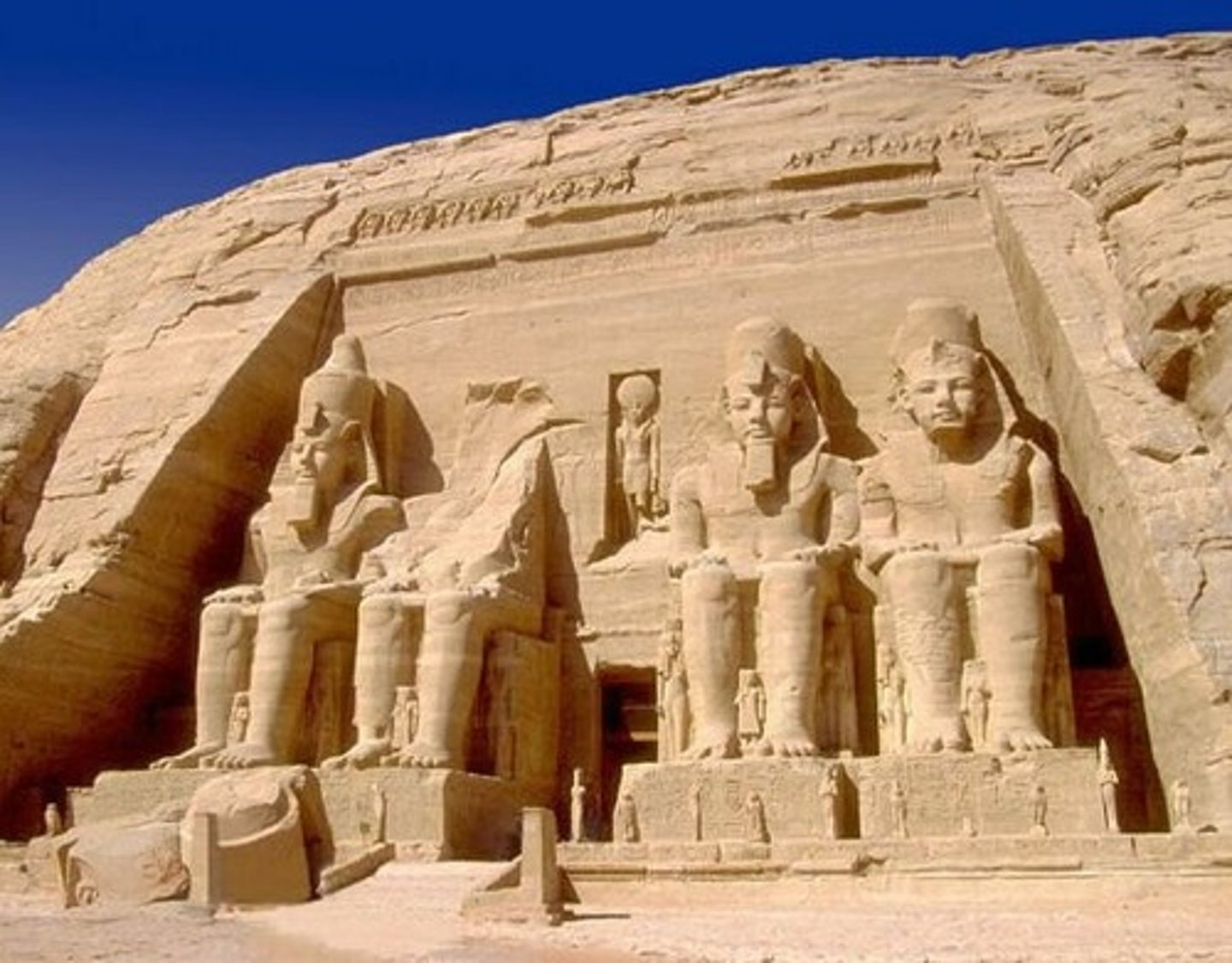
what are the Abu Simbel temples made of and its significance
Sandstone made from living rock carved away from the cliffside = cheaper
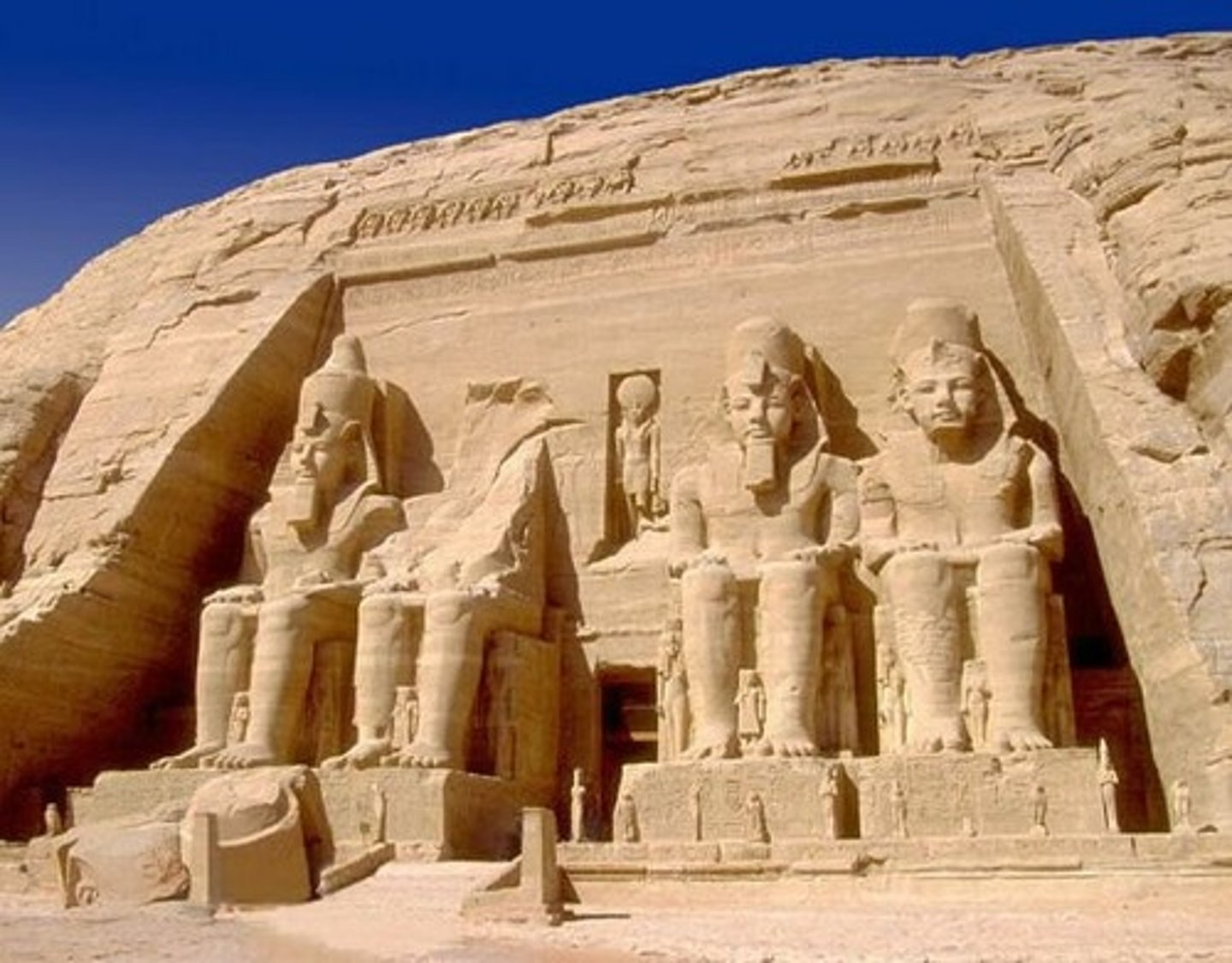
what are the circumstances around the Abu Simbel temples
They were moved to higher ground because the nile flooded
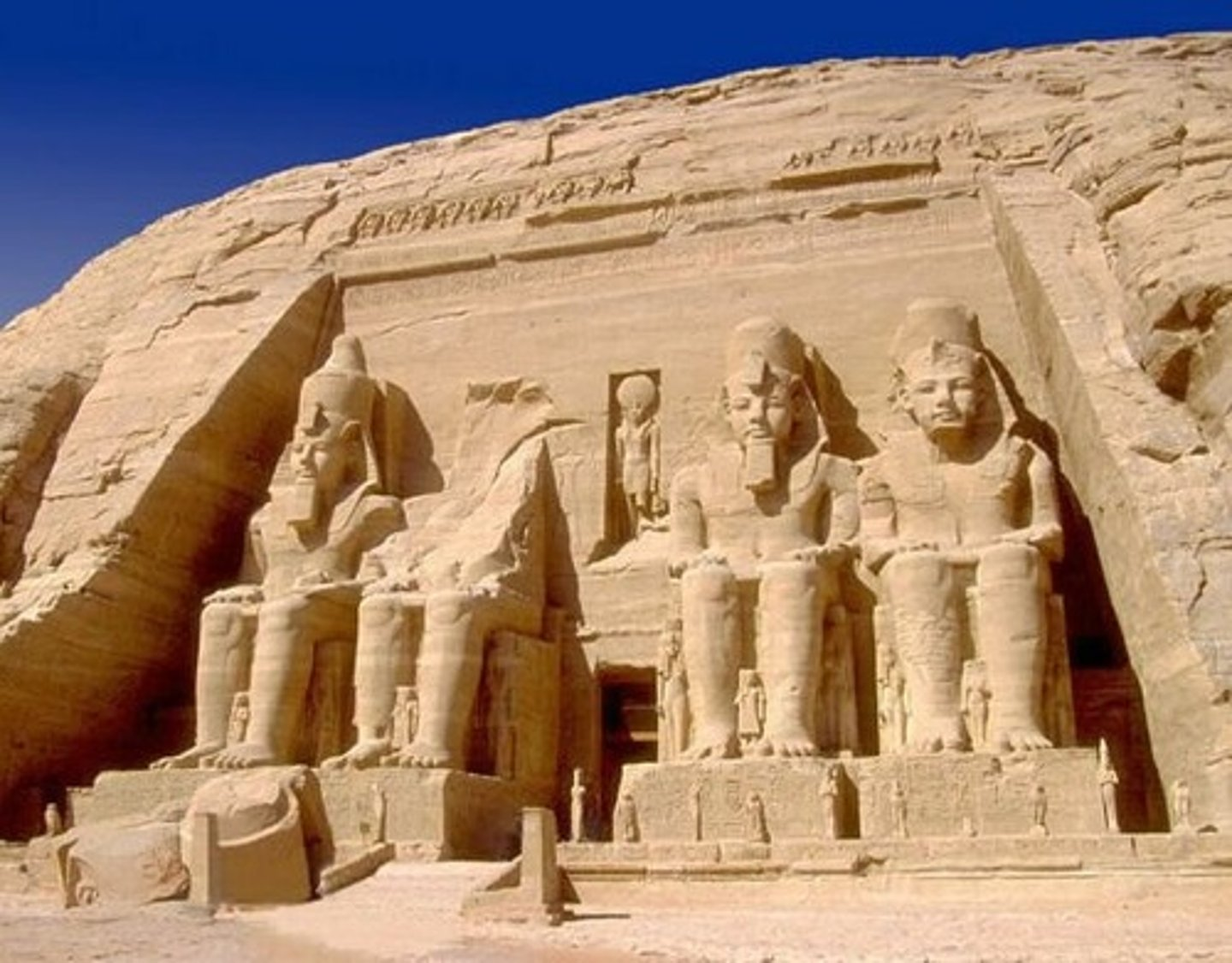
explain the composition of the Temples at Abu Simbel and its significance
symmetrical 4 identical enthroned Ramses (relief sculptures), attached, but jut out, other figures between the legs (smaller wife and family)
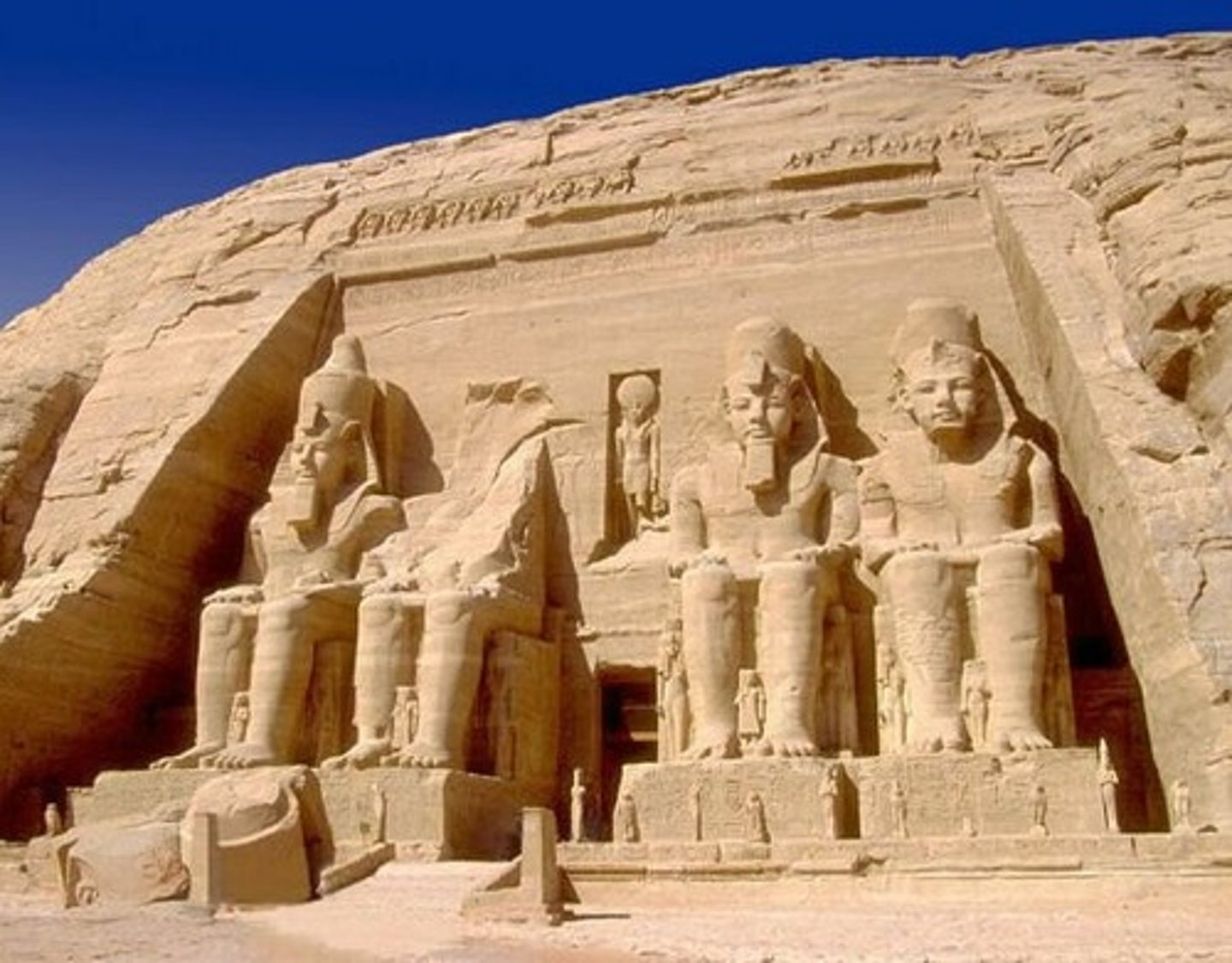
describe the appearance of the Temples at Abu Simbel
Ramses statues with ceremonial beard and crown, more schematic/cartoonish, relief paintings on ceiling, Osiris sculptures and other deities, sometimes illuminated by the sun
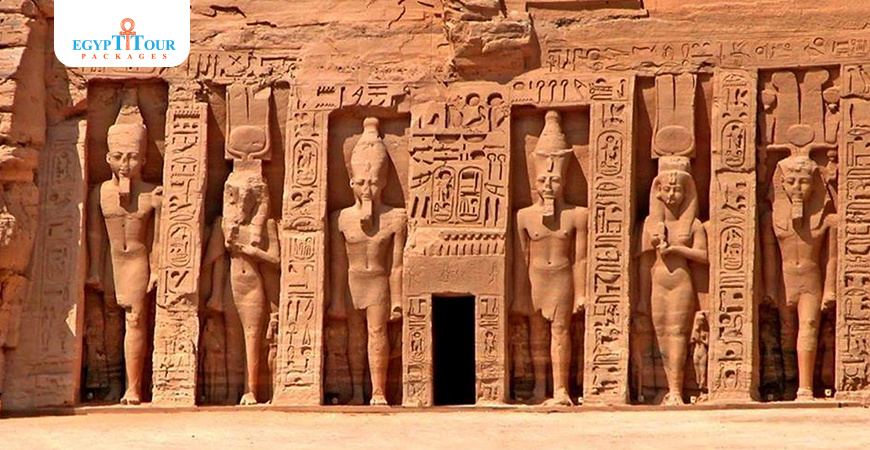
describe the Queen Nefertari temple
axial approach, cut into living rock, Hieroglyphics and statues in relief, both male and female of equal size